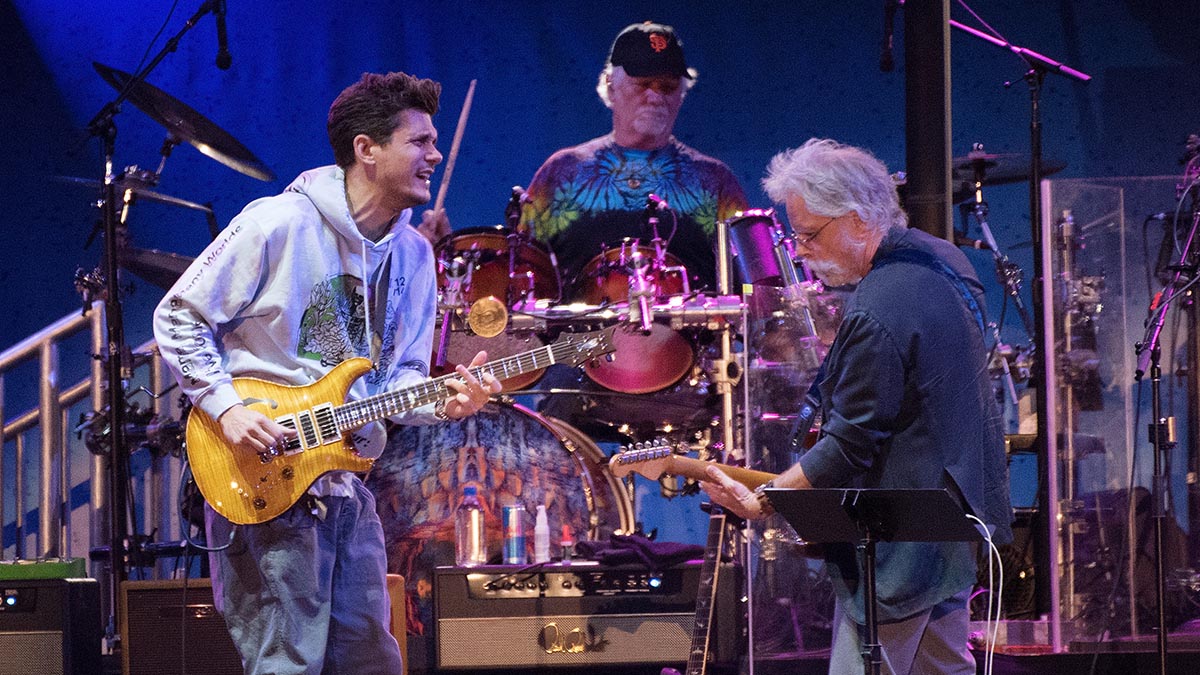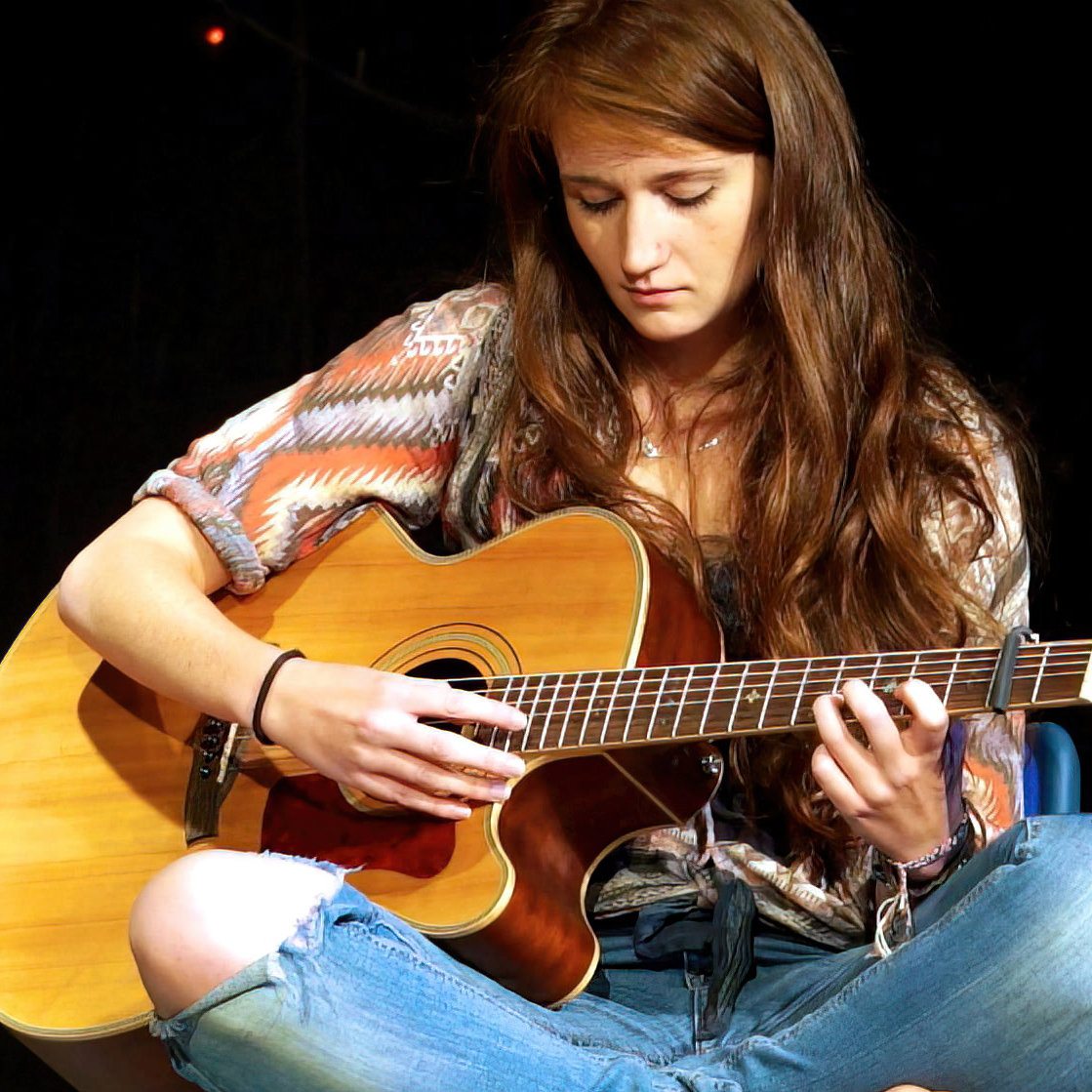How John Mayer came to join Dead & Company
Mayer's journey as a Deadhead was like many who got into the band after the fact – except he soon found himself onstage beside Bob Weir and a custodian of the Grateful Dead's legacy

John Mayer’s discovery of the Grateful Dead happened by chance. In 2011, while listening to random suggestions on Pandora, he heard the Dead classic Althea, and with that he fell hard and fast. Taking a deep-dive into the band’s vast back catalogue, he became a committed ‘Deadhead’, leading to a remarkable chapter in his career.
The first evidence of the Dead’s influence on Mayer came with his 2012 album Born And Raised and 2013 follow-up Paradise Valley. Both albums marked incrementally intensifying departures from polished pop, with Mayer doing and playing exactly what he pleased. And both contained subtle but abundant Grateful Dead influences.
Queen Of California, the opening track from Born And Raised, was in tune with the folksy, acoustic numbers that abound on the Dead’s two albums from 1970, American Beauty and Workingman’s Dead.
In the second verse from Queen Of California, Mayer also made a reference to Neil Young’s After The Goldrush, before a lengthy pedal steel-driven outro took hold over a bedrock of Dead-esque repeating chords.
Another connection was made in this album’s title track. Jerry Garcia – the founding member and de facto leader of the Grateful Dead as vocalist, lead guitarist and principal songwriter – had played pedal steel on the song Teach Your Children from Déjà Vu, the first album featuring Neil Young in the '70s supergroup Crosby, Stills, Nash & Young. For the song Born And Raised, Mayer had David Crosby and Graham Nash on backing vocals.
And in Wildfire, the first track on Paradise Valley, a comparatively jam-based number with an outdoorsy feel, Mayer sang: “We can dance with the dead/You can rest your head.” Which – depending on how deeply you like to read into things – may well be a reference to the band.
Fast-forward to 2015, and while appearing as a guest host on The Late Late Show, Mayer was presented with the opportunity to perform with another founding member of the Dead, rhythm guitarist Bob Weir.
All the latest guitar news, interviews, lessons, reviews, deals and more, direct to your inbox!
The song they played together was Althea. A bond was formed between them, and by the end of that year, Mayer was invited to join Weir in Dead & Company, a touring outfit also featuring Mickey Hart and Bill Kreutzmann, two drummers who played together in the Dead for many years.
For all Mayer’s success, this was a challenge – not only to step out of his pop-meets-blues box into the realm of the jam band, but also to take the place of Jerry Garcia, the talismanic figure who died in 1995 at the age of 53.
With a vast repertoire to learn and a comparatively unstructured style of playing to get to grips with, Mayer entered a bootcamp for the role with all the reverence and sincerity a Deadhead could hope for.
He wrote on Instagram, alongside a 1970s era photo of Garcia: “I’m only here as an interpreter of a master. I play in constant emotional, psychological and musical deference to Jerry Garcia.”
This being said, long-time Deadheads could be forgiven for reacting with some scepticism to the news that the man behind hits such as Daughters and Waiting On The World To Change could be right for the job – especially as more likely jam band candidates such as Warren Haynes and Phish’s Trey Anastasio had already tried out and then withdrawn from the position.
But Mayer was nothing if not thorough about taking on the role. As he stated in a 2016 SiriusXM Radio interview regarding his training for playing one of rock’s most expansive repertoires: “I’m naturally obsessive anyway, so it suited my way of life.”
Further to the material itself, Mayer went all-in on gear to make his transition to fronting Dead & Company as seamless as possible.
Jerry Garcia’s tone was made unique by the pioneering addition of in-built pre-amps and effects loops to his custom-made Doug Irwin ‘Wolf’ and ‘Tiger’ guitars. Mayer teamed up with PRS to create the Super Eagle II – a guitar which became his main touring instrument with Dead & Company - and which comes in a super duper trippy hemp green finish.
The Super Eagle II features specially-wound 58/15 JM treble and bass pickups with a Narrowfield JM pickup in the middle position (with three individual coil-tap mini-switches), and a JCF Audio preamp – a layout and design very similar to Garcia’s instruments.
When it comes to playing live, the jam band environment seems to bring out the team-player in Mayer. After-all, Dead & Company is the first band he’s played in where the songs and the spotlight are not all his. Certain songs have bluesy in-roads and Mayer employs his well-honed chops to bring flamboyant interpretations to the music.
Elsewhere, the more psychedelic material leaves room for wandering melodic noodles where the destination may be predetermined, but the route to finding it is a little (or a lot) more flexible. Embracing simple, scale-based melodies without the large leaps and bends associated with blues soloing, Mayer is able to meander rather than race and, with trademark chromatic passages, channels Garcia effectively and respectfully.
On stage, Bob Weir looks like a cross between a wise mentor and a proud father figure as he and Mayer trade looks and licks. Back in 2016, alongside a snap of the band, Mayer posted on Instagram, “I grew up a lone wolf in my bedroom practicing my guitar, and all I ever really craved was a community.”
This is perhaps what best sums up the effect that joining Dead & Company has had on Mayer’s musical outlook. As a band who were able to draw the same crowd night after night in a country-wide “long strange trip”, the idea of community will not be alien to any long-serving Deadhead. Thanks to Mayer, the live experience that captivated fans for decades is far from dead.
Since graduating university with a degree in English, Ellie has spent the last decade working in a variety of media, marketing and live events roles. As well as being a regular contributor to GuitarWorld.com, she currently heads up the marketing team of a mid-scale venue in the south-west of England. She started dabbling with guitars around the age of seven and has been borderline obsessed ever since. She has a particular fascination with alternate tunings, is forever hunting for the perfect slide for the smaller-handed guitarist, and derives a sadistic pleasure from bothering her drummer mates with a preference for wonky time signatures.

